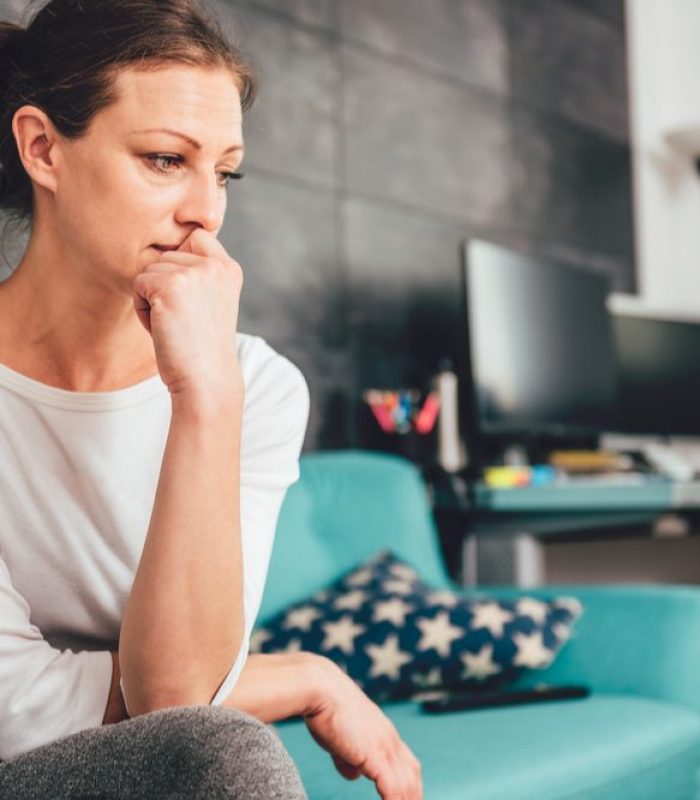Anxiety relief and cannabis are now a more common pair than ever before.
Do you, or someone you know, struggle with anxiety? Anxiety is a common disorder in North America that often goes undiagnosed and, therefore, untreated. People far too often brushed it off as job-related stress or the cost of success. What’s more, not everyone displays the same symptoms, and the signs may be misinterpreted. For example, anxiety isn’t just agitation and worry, some people express anxiety through outbursts of rage or addictions. The traditional approach to anxiety treatment has always been therapy and pharmaceuticals. But not everyone is keen to turn to medication as a means to solve their growing anxieties. It’s why anxiety and cannabis has become such a hot topic of discussion. Ask those who do use cannabis to soothe anxiety strongly feel it reduces the symptoms without the same risk of side effects.
Anxiety and cannabis is well worth serious consideration. But not without analyzing the available research first. In a side by side comparison between anti-anxiety medications and cannabis, what are the pros and cons of each approach?
Typical Treatments for Anxiety
Anxiety is a broad term covering several official diagnoses. These include Generalized Anxiety Disorder, Social Anxiety Disorder, Post Traumatic Stress Disorder (PTSD), Panic Disorder, and a handful of others. Anxiety may also be a symptom of other conditions, even physical health conditions. Conventional treatments vary widely depending on the diagnosis, although treatments almost always fall into two categories: therapy and pharmaceuticals.
Therapy is a valuable non-pharmaceutical approach to working through anxiety. It typically focuses on learning a set of skills to reduce symptoms and, with time, overcome the condition. According to the Mayo Clinic, cognitive behavioral therapy is the most effective approach for anxiety.
The second option is the pharmaceutical approach, which may be used in conjunction with talk therapy. Medications such as Zoloft, Paxil, Prozac, Xanax, and Valium are common anti-anxiety prescriptions. Most of these fall under the selective serotonin reuptake inhibitor (SSRI) and serotonin and norepinephrine reuptake inhibitor (SNRI) categories of medications. Buspirone and Benzodiazepines are also options, but far less common because of the dangerous side effects.
The Benefits of Anti-Anxiety Medications
For some patients, talk therapy may be all they need to power through a bout of anxiety. But others may require additional assistance, which is typically a prescription for an SSRI or SNRI.
Medications can help patients get through the most severe period of anxiety, to then create the capacity for talk therapy, lifestyle changes, and learning new skills. It’s like a big push to get a patient over the hill and into the clear to make real change. Although it may take six to twelve weeks to experience full benefits, some patients feel immediate relief from the most intense symptoms.
According to a 2002 publication in Dialogues in clinical neuroscience, clinical studies have demonstrated these types of medications reduce anxiety for forty-two to seventy-seven percent of people. [1]Cassano, G. B., Baldini Rossi, N., & Pini, S. (2002). Psychopharmacology of anxiety disorders. Dialogues in clinical neuroscience, 4(3), 271–285.
The Pitfalls of Anti-Anxiety Medications
Unfortunately, all anti-anxiety solutions also have adverse side effects: addiction, drowsiness, agitation, weight gain, insomnia, sexual dysfunction, and dizziness. Moreover, many patients complain that these pills make them less energetic and less able to engage in activities that previously made them happy. A common complaint is that anti-anxiety meds make you feel numb.
As per a 2012 review, “Approximately 30–50% of patients experience more mild and transient side effects, most commonly nausea, diarrhea, headache, insomnia, jitteriness, or restlessness. It is thought that anxious patients are more sensitive to jitteriness with these agents, though this has not been conclusively studied.” [2]Farach, F. J., Pruitt, L. D., Jun, J. J., Jerud, A. B., Zoellner, L. A., & Roy-Byrne, P. P. (2012). Pharmacological treatment of anxiety disorders: current treatments and future directions. … Continue reading
These challenging side effects, especially the changes to energy, sexual function, and demeanor, are why many patients explore anxiety and cannabis. Patients want to find a natural solution and one that doesn’t have so many frustrating side effects.
How Can Cannabis Help?
For years, cannabis advocates have touted the calming effects of this healing plant. But until relatively recently, there had been no research to back up these claims. Slowly, researchers have turned their attention to cannabis as a novel way to reduce the symptoms of anxiety disorders. Especially impressive is the ability of cannabidiol (CBD) to reduce stress and anxiety. Over the last decade, there have been several interesting breakthroughs, including cannabis for social anxiety disorder and PTSD.
In 2011 the journal of Neuropsychopharmacology published a paper exploring the intersection between CBD, social anxiety, and a simulated public speech. The researchers dosed treatment-naive participants with diagnosed social anxiety with 600 mg of CBD before a simulated speech. Compared with a control group, “Pretreatment with CBD significantly reduced anxiety, cognitive impairment and discomfort in their speech performance, and significantly decreased alert in their anticipatory speech.” [3]Bergamaschi, M. M., Queiroz, R. H., Chagas, M. H., de Oliveira, D. C., De Martinis, B. S., Kapczinski, F., Quevedo, J., Roesler, R., Schröder, N., Nardi, A. E., Martín-Santos, R., Hallak, J. E., … Continue reading
There has also been significant attention given in the scientific literature to cannabis use and PTSD. Anxiety is a chronic symptom of this disorder, and often a reason people with PTSD seek relief from medical cannabis. In 2014, “Preliminary, Open-Label, Pilot Study of Add-On Oral Δ9-Tetrahydrocannabinol in Chronic Post-Traumatic Stress Disorder,” published in Clinical Drug Investigation.

The PTSD Study
This study provided ten patients with PTSD with five milligrams of THC daily in conjunction with their other treatments. The authors concluded, “The intervention caused a statistically significant improvement in global symptom severity, sleep quality, frequency of nightmares, and PTSD hyperarousal symptoms.” [4]Roitman, P., Mechoulam, R., Cooper-Kazaz, R. et al. Preliminary, Open-Label, Pilot Study of Add-On Oral Δ9-Tetrahydrocannabinol in Chronic Post-Traumatic Stress Disorder. Clin Drug Investig 34, … Continue reading
There may only be a limited number of preclinical and clinical studies on CBD for anxiety, but the results thus far are positive. Plus, cannabis generally has a low rate of adverse reactions, which is an added point in favor of cannabis for anxiety. Especially when it comes to CBD, the side effects are rare and mild when they do happen.
As per “An Update on Safety and Side Effects of Cannabidiol: A Review of Clinical Data and Relevant Animal Studies,” CBD is safe and well-tolerated. The researchers note, “In comparison with other drugs, used for the treatment of these medical conditions, CBD has a better side effect profile.” [5]Iffland, K., & Grotenhermen, F. (2017). An Update on Safety and Side Effects of Cannabidiol: A Review of Clinical Data and Relevant Animal Studies. Cannabis and cannabinoid research, 2(1), … Continue reading
Anxiety and Cannabis
The research may still be working through the early phases, but these initial results indicate the role of cannabis for anxiety conditions. Cannabidiol, in particular, seems to offer clinically notable reductions in both the physical and experienced expression of anxiety.
On top of the current body of research, there are also reports from real-patients already working with cannabis for anxiety. In case after case, patients detail positive results from cannabis. Many of these stories also highlight how pharmaceuticals failed to reduce anxiety without serious side effects. These personal stories highlight the potential of medical cannabis for anxiety.
References






